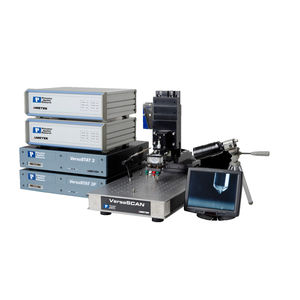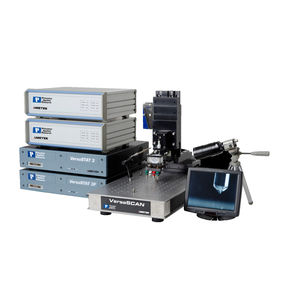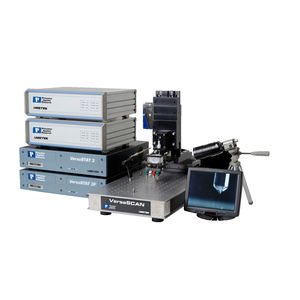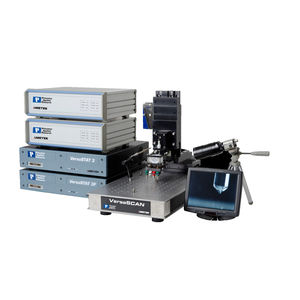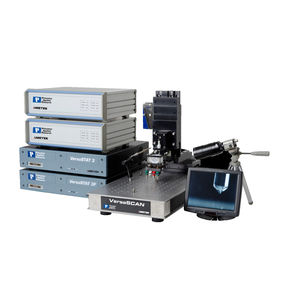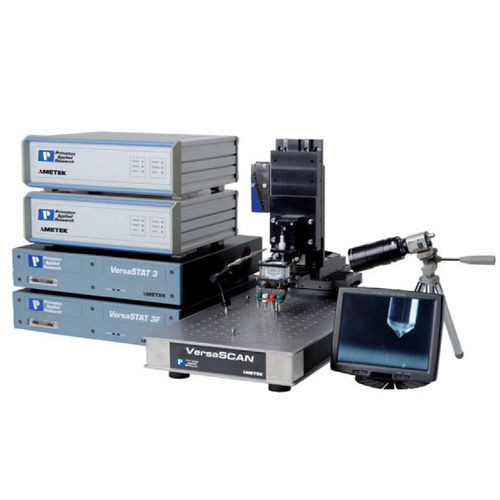
- Metrology - Laboratory
- Metrology and Test Equipment
- Laser scanner
- Princeton Applied Research
Laser scanning system VS-SECMelectrochemical


Add to favorites
Compare this product
Characteristics
- Technology
- electrochemical
Description
The SECM integrates a positioning system, a bipotentiostat, and an ultramicroelectrode probe or tip. The positioning system moves the probe close to the surface of the sample, within the local imaging zone. The bipotentiostat can polarize the probe only (feedback mode) or the sample and the probe independently (generator-collector mode), while measuring the resulting current(s). The probe is specially designed to have a specific tapered polish (per the RG ratio) and active radius below 100 microns. The positioning system scans the probe and charts position with measured electrochemical parameters, creating a data map of local current.
Approach Curves (feedback mode) are used as an electrochemical means by which to position the probe in Z sufficiently close to the sample to be in the local imaging zone. A DC voltage is applied to the probe, while the DC current response is plotted as the probe is incremented towards the sample. When the probe is sufficiently close to the sample (a distance of 2-4 times that of the probe diameter) the measured current at the tip transitions from a bulk response to a local response. Over a region of high conductivity, a Nernstian response provides a local current enhanced over that of the bulk current. However, local current is decreased relative to the bulk value over areas of low conductivity of the sample as mass-transport is hindered to the probe.
VIDEO
Catalogs
No catalogs are available for this product.
See all of Princeton Applied Research‘s catalogsOther Princeton Applied Research products
Scanning Electrochemical Systems
*Prices are pre-tax. They exclude delivery charges and customs duties and do not include additional charges for installation or activation options. Prices are indicative only and may vary by country, with changes to the cost of raw materials and exchange rates.


